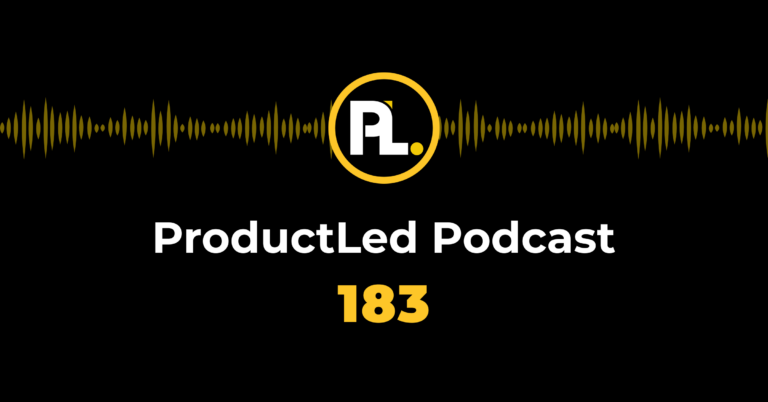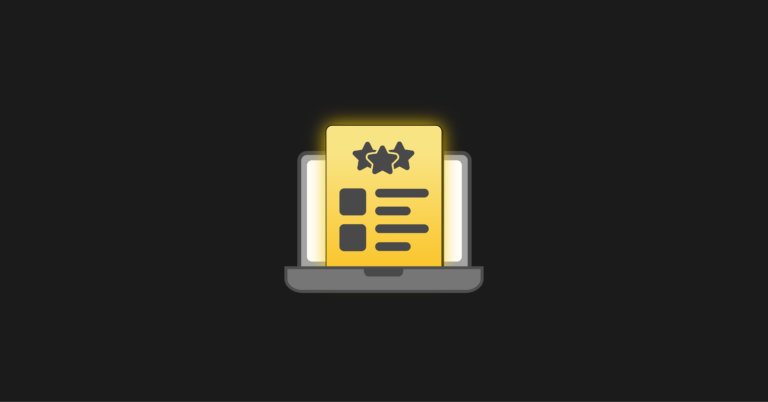Many businesses often don't do much user research in relation to their SaaS pricing and packaging. If you want to stay competitive and also generate revenue, you can't just slap some arbitrary number down for pricing.
I’ve consulted with clients on pricing and packaging in the B2B space for the past three years. There are challenges across the board with pricing, as it’s just not a structured part of the business. The experience ends up being a lot of trial and error, and it blends an understanding of customer value, psychology, and finance.
This article discusses how to approach SaaS pricing and packaging for product-led companies to fuel growth.
What You Might Be Getting Wrong About Pricing
Most executives think that what you charge will determine your success. In fact, it’s who you charge and how you do it that determines your success in SaaS.
Simply put, product-led companies need to focus on:
- Target audience
- What their audience values
- How to align the overall packaging to showcase that value
Most clients are concerned with what I call the “price level.” They debate whether their price point should be $10 or $20 a user, or even $19.95. And while those are interesting questions, these details are decided at the very end of the process and are actually the least important.
How Companies Can Optimize For an Effective Price
An effective price helps your business capture a fair price for the value that you deliver to customers. While meeting short-term financial objectives, effective pricing also maximizes long-term profitability.
Start By Delivering Value
Taking into account the company stage, you can start to work on your optimal pricing strategy by first focusing on delivering value.
A Fortune 500 company will be at a very different place in its company life cycle than a startup. If you are a $5 million per year revenue Silicon Valley startup, SaaS pricing and packaging is not your most important lever when starting out.
First, focus on creating and delivering value to ensure you have product market fit, then charge something.
Iterate and Optimize
The pricing process mimics every other research process you might go through in a startup. It’s important to prioritize what information you need, what impact pricing has on the business, and how it relates to other areas.
Ask questions like this to begin your discovery phase:
- What have we done so far?
- What has worked or not?
- What isn't aligning the team around our desired outcomes?
- What are we trying to optimize? (eg. Profit, market share, revenue, gross margin?)
Once you’re ready, start your research phase with qualitative and quantitative approaches to your questions. Follow up with testing, then iteration. Finally, come up with a decision and implementation.
You should have a consistent process that you work through.
The Four-Part Model (SCVS)
I use a four-part model with my clients for pricing. The four parts are customer segments, value, competition, and strategy.
Let’s go through each of these.
Customer Segments
Your customers value different things, which will cause them to value your particular product offering differently. Creating different customer segments will have different competitive alternatives available to them.
Value
Value is the positive feeling that your product offers to your customer. We can explore this through the lens of the jobs-to-be-done framework.
There are three different types of jobs in this framework:
- Functional jobs are the task that a customer is looking to achieve.
- Emotional jobs result in some sort of emotional outcome or benefit, such as less stress. There might be any number of different emotional drivers.
- Social jobs are those jobs that give us status or help us feel like we're giving back to a community.
If you can't focus on financial value, try to ask questions about value with the customers and dive into the psychological aspects of value.
Competition
You might be navigating a wide range of competition. For example, there could be low-end players or high-end players. SaaS companies may be competing with themselves, or a status quo. Many software companies are actually competing with email and spreadsheets, not necessarily the startup down the road.
Strategy
Those first three elements – segments, your value, and your competition – are part of the research process. They are inputs that you need to filter into your overall pricing strategy.
Given what you now know from your research:
- Who do you decide to serve?
- How do you position yourself so that customers understand that competitive differentiation and unique value?
- And then how do you create the overall pricing and packaging to capture the strategic objectives that the company has?
Packaging in the Context of SaaS
It’s essential to clarify what packaging is from the perspective of a software product. Putting this into context for product-led businesses and SaaS companies means talking about more than just price.
The Four Different Components
Here, you’ll want to take a look at these elements to clarify what you’re offering.
Price Metric
The price metric is the unit of value you charge a customer. For example, in a SaaS product, you could charge by seat, by API transaction, or by data usage, like Dropbox.
The pricing package could be a subscription, a pay-as-you-go model, or freemium. This is your business model or monetization strategy.
Bundles
Offer configurations or bundles are often the tiers in SaaS. Companies offer a “good, better, best” as different bundles are sold to customers. Typically, companies recommend a package, such as what Mailchimp does.
Price Fence
A price fence charges two different customers different prices for the same product. For example, if you go to a movie at noon during the middle of the week, you pay less than when you go at 7:00 PM.
Often in B2B, if you speak with a company on the last day of the quarter, you’ll get a different discount than someone who is calling a Sales team mid-year when they're not under the gun to make their quota.
Price census could also be based on user identity, for example, the discount tickets at the movies for a student or senior citizen.
Volume
One of the most common ways to package in B2B is with the concept of volume. If a user buys one seat of your product, it’s a different price per seat than if they buy a thousand.
The product is the same, but because they bought more volume, it’s a different price for that product.
Good Packaging is Simple
Ultimately, good packaging is simple. It helps increase customers' ability to self-select into an offering which increases the velocity of every sales opportunity.
This is important because the more time sales personnel spend on a deal, the more it increases your customer acquisition costs.
For a product-led company with a lot of volume and velocity, it’s essential that your offering is clear. Customers should understand what might be the best for them so that you don't need a salesperson walking them through a full menu of every possible configuration.
Good packaging can help:
- Competitive comparison or differentiation, depending on your goals.
- Communicate the value proposition of the product.
- Justify the price that you charge.
Teams Responsible for Pricing
The people responsible for your SaaS pricing and packaging are different depending on the company stage and life cycle. Often at the beginning, founders are in charge, and even as it goes to a later stage, CEOs still are involved in pricing.
It's such an important cross-functional metric, and so critical to the business.
Product Marketing
In large, established companies, Product Marketing teams should own pricing. They're usually close to customer performance, customer research, product usage data, and understanding the different business drivers. They're in a good position already to take on the task.
Product marketing is close to value messaging and promoting value, which is intimately linked to price.
All parts of the business have stakeholders in pricing. The teams I work with are not usually consistent – although it often ends up being the entire executive team. It’s important to make sure those people like the CEO and Head of Sales are involved.
Build a Pricing Committee
I recommend creating a pricing committee with a clearly designated leader. There are so many opinions in the building that the issue of pricing can fall to the side, or be avoided altogether.
Just like the product managers’ primary purpose is to sit, listen, include the needs of the customer, and make the best decision for the business – so too should the leader of the pricing committee.
Finance or Sales are important stakeholders and inputs to the process, but they should not own pricing.
If the goal is long-term company profitability, you need a team that’s closer to the customer. You need in-depth customer research to run effective pricing. This falls outside of their core functional expertise.
Changing Your Pricing: How and When?
There is often a connection between how often companies change their pricing and how fast they grow. The best-in-class companies change something about their pricing and packaging every quarter.
Pricing optimization and packaging could look like:
- Introducing a new monetized add-on module.
- Configuring a new tier.
- Looking at and revising your discount strategy.
- Internal deal desk policies.
There are a broad number of activities that don’t result in changing your end price for existing customers. All conversations around price are ultimately tied to value – and companies are constantly improving their products.
These are some questions you can ask regarding when to change your pricing:
- Have your product managers or engineers shipped a new version that has made significant changes to your product?
- Are you attacking a new market segment that you haven't addressed before?
- Have you created a new set of functionality that might be sold as an add-on module or a new tier?
- Did you acquire another company and now need to rationalize your pricing and packaging approach across multiple products? Maybe it was fine with just one product, but with multiple, it might confuse the go-to-market motion.
Generally it’s wise to revisit pricing at least once a year or whenever a change in your product or market would necessitate a review.
How should SaaS businesses identify their optimal price strategy?
SaaS pricing and packaging starts with a concrete understanding of the value you created. It’s a process to research, understand and test. It should be reviewed and updated at a minimum of once per year. External factors like inflation and internal changes in your SaaS necessitate regular updates.
Establish a pricing process. Like any other process in your business, it needs ownership and a methodical way to go about the changes.
In ProductLed's 4-week ProductLed Accelerator program, we cover SaaS pricing and packaging in the final week — after we’ve defined end-user success, picked the right product-led model, and streamlined your onboarding journey.
The cohort-based program provides all the tools you need to launch a product-led growth strategy that fits your product. Even if your product is already in the marketplace, we can help identify the areas you can experiment with to increase market adoption.
When you sign up for the ProductLed Accelerator program, you get:
- Full access to the 4-week live online program for 60 days that covers the steps to implement product-led growth.
- Unlimited 1:1 feedback for 60 Days via Slack with ProductLed Coaches for concrete feedback.
- Private Slack community for class discussions with your cohort.
- Frameworks and templates that help you apply the training to your business.
Take our free PLG certification course now, or sign up for our next live training program. You can also get your questions answered by peers and experts when you join the world’s largest product-led growth community on Slack.









